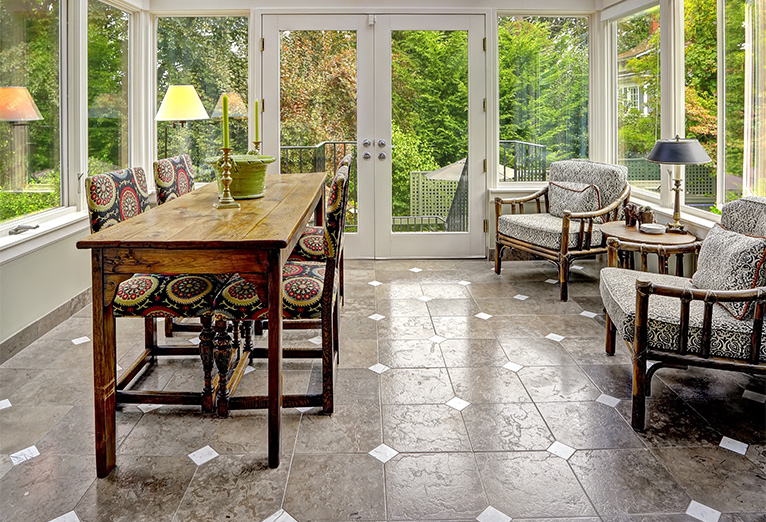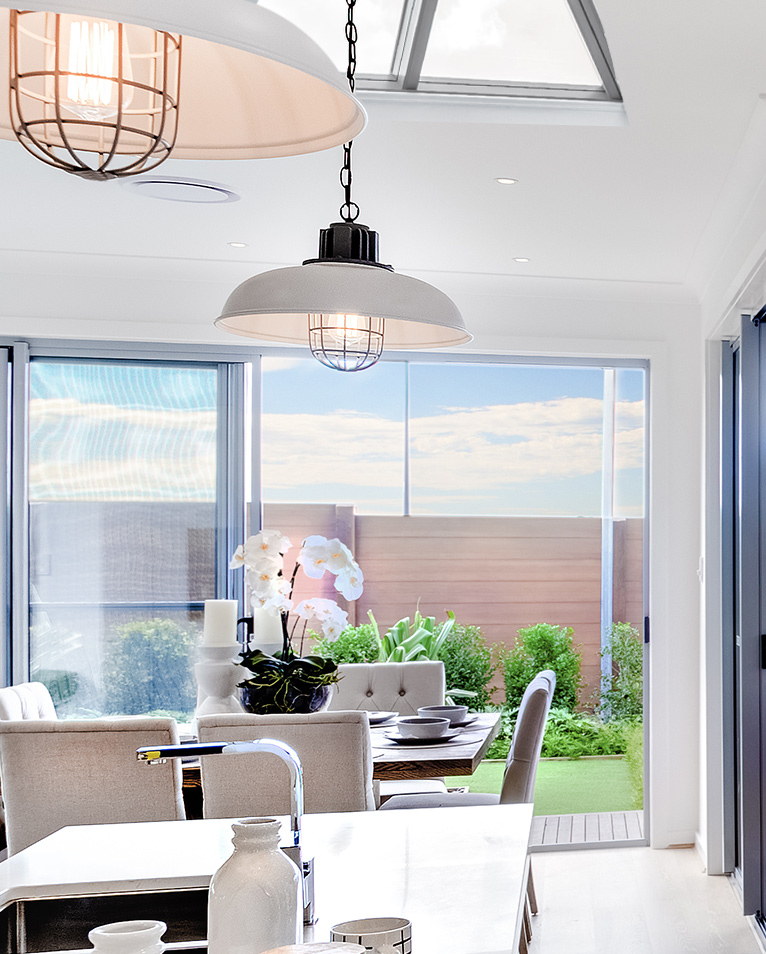
What is the difference between an orangery and a conservatory?
The name orangery comes from the 18th century, when wealthy families needed a hot, sunlit room to grow the ultimate luxury, citrus fruit! Things have changed but not the love of natural light in our homes. Conservatories have pitched roofs and are made almost entirely of glass, leaving them open to extremes of heat and cold. An orangery is a more stylish way to add extra square footage; a solid extension with beautiful brickwork or stone walls, floor to ceiling windows and a flat roof with a lantern window flooding the space with light.

Who doesn’t want extra space in their home? An orangery is the perfect flexible addition, whether you’re hankering after a modern and bright kitchen diner that opens onto the garden, a tranquil and cosy living room or a relaxed space for entertaining – or all three! Yes, building an extension is a costly and disruptive investment, but one that will pay off in improved property value, living space that works for you and a view of your garden to enjoy year-round.
4 Steps to creating the perfect orangery extension:
- Choose a size and design to suit your home and budget

Orangeries will enhance any size or type of property. If you have stone walls you could match the stone for the base of the extension walls or you could choose a timber frame to add warmth and character. Why not go for arched french doors to give an elegant period feel? There are so many exciting possibilities! It’s worth taking design advice from professionals and to find out if planning permission will be needed.
- Bring the space to life with interiors that sing

This is the fun part! It’s easy to go overboard with furniture and overwhelm the light, airy space, so pick a few pieces that create the vibe you’re after. Perhaps a botanical feel with vibrant wrought iron table and chairs and plants to bring the outside in, a rustic oak dining table and painted chairs for a welcoming family kitchen or a stylish and comfortable corner sofa that draws guests in to chat.
- Use flooring and lighting to create ambience

However you use your orangery, lighting needs to be functional as well as easy on the eye. For a kitchen you could go with pendant lights to accentuate the table setting and use a dimmer switch so you can respond to changes in natural light through day and evening. Choose flooring that flows from house to orangery to garden, making the most of the connection between spaces.
- Make the space work year-round with heating and ventilation

Less fun, but very important, is to choose fittings that keep your orangery warm in winter and cool in summer. Underfloor heating is a clever option as it doesn’t take up wall space or a log burner creates an irresistibly cosy room. Lined blinds or curtains will also help keep heat in and your bills down. In warmer months automatic roof lantern ventilation will let in a cool breeze and close when rain is detected, so you can be comfortable regardless of the weather!
Looking for an electrician? Find vetted, professional tradespeople by posting your job on Rated People.
